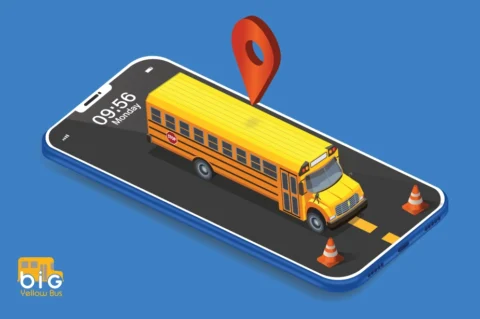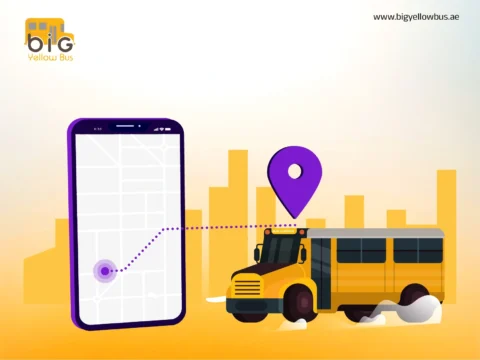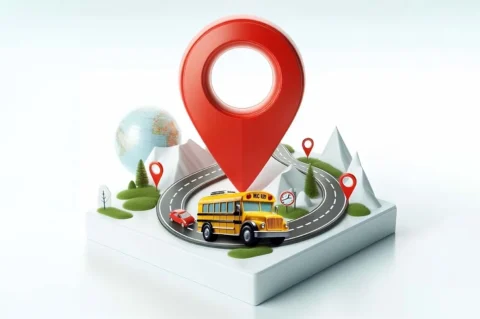In the rapidly evolving landscape of educational technology, one innovation stands poised to fundamentally transform the intersection of transportation and learning: predictive mobility. As we navigate through 2025, the humble School Bus Tracking System has evolved far beyond simple GPS coordinates to become an intelligent ecosystem that anticipates needs before they arise, creating ripple effects throughout education that few could have imagined just years ago.
From Reactive to Predictive: The Evolution of Transport Intelligence
Today’s School Bus Tracking System bears little resemblance to its predecessors. Rather than merely reporting locations, modern systems leverage advanced machine learning algorithms to anticipate transit patterns before they emerge. These systems now analyze thousands of data points per second—from historical traffic flows to real-time weather systems—creating a living, breathing model of transportation needs that adapts organically.
“We’ve crossed the threshold from knowing where buses are to knowing where they should be,” explains Dr. Eliza Montgomery, Chief Innovation Officer at EduTransit Solutions. “The predictive capabilities of today’s School Bus Tracking System mean we’re seeing up to 27% improvements in arrival time accuracy, even during unpredictable events.”
The Neuroadaptive Transport Grid
Perhaps most revolutionary is the emergence of what experts call “neuroadaptive transit”—where the School Bus Tracking System functions as a distributed neural network across a city’s educational infrastructure. Each bus serves as a node in this network, communicating not just with a central hub but with each other, nearby traffic systems, and even school building management systems.
This interconnectivity allows for unprecedented responsiveness. When a school’s schedule changes for a special educational event, the system automatically recalibrates routes and pickup times. When weather threatens to close schools in one district but not another, the School Bus Tracking System preemptively adjusts to accommodate the cascading effects on traffic throughout the region.
Edge Computing and the Moment-to-Moment School Journey
The technological leap enabling these advances comes largely from the implementation of edge computing within the School Bus Tracking System architecture. Rather than relying solely on cloud-based processing, modern systems distribute computational power throughout the fleet, allowing for microsecond decision-making that happens locally.
This distributed intelligence means that when a bus encounters unexpected road construction, it doesn’t just report the delay—it instantly recalculates optimal routes for the entire fleet, coordinates with school notification systems, and adjusts estimated arrival times for every student affected, all without human intervention.
Biometric Integration and Personalized Learning Continuity
In 2025’s most forward-thinking districts, the School Bus Tracking System has begun integrating with students’ learning profiles through secure, privacy-focused biometric recognition. This integration creates what educators call “learning continuity”—the seamless transition between home, transportation, and classroom environments.
As students board buses equipped with these advanced systems, their learning tablets automatically download the day’s materials, sync overnight homework progress, and prepare personalized morning review materials for the journey. The School Bus Tracking System effectively transforms transit time into productive learning time, reclaiming an average of 40 minutes per student per day that was previously underutilized.
Sustainability Metrics and Environmental Learning
Perhaps most surprising is how today’s School Bus Tracking System has become a cornerstone of environmental education. Modern systems continuously monitor and optimize for carbon footprint, fuel efficiency, and environmental impact—then feed this data directly into science curricula.
Students now track their own transportation footprint through interactive dashboards, competing between bus routes to achieve the lowest environmental impact. This gamification of sustainable transit has reduced emissions by up to 34% in pilot districts, while simultaneously improving science test scores related to environmental systems.
The Road Ahead: Predictive Mobility as Educational Infrastructure
As we look toward the latter half of the decade, it’s clear that the School Bus Tracking System will continue evolving from utility to essential educational infrastructure. The most innovative districts are already exploring integration with adaptive learning platforms that adjust curriculum pacing based on transit patterns, ensuring that weather delays or transportation issues don’t disrupt educational continuity.
The implications reach far beyond education. As school transportation represents one of the largest public transit systems in many communities, innovations in School Bus Tracking System technology are already influencing municipal transit planning, corporate commuter programs, and urban development strategies.
The rise of predictive mobility through advanced School Bus Tracking System implementation represents not just an improvement in how we move students, but a fundamental rethinking of the relationship between physical movement and educational achievement. As 2025 progresses, these systems will increasingly serve as the connective tissue between our smart schools and smart cities—the invisible intelligence ensuring that the journey to knowledge is as efficient, productive, and enriching as the destination itself.





